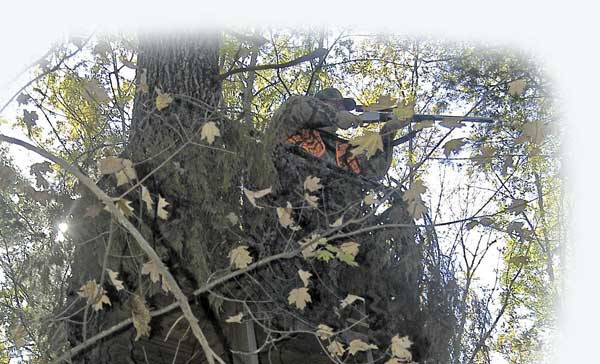
October and November mean its muzzleloader time. Discover two trophy hunters’ favorite equipment and how they put big bucks on the wall.
Many North Carolina deer hunters treasure the muzzleloading rifle season for a variety of reasons.
For openers, they get an advance crack at big bucks prior to regular gun season. For some it’s an incremental hunting process as the season transitions from bow hunting to open gun season. For many hunters, muzzle-loading season simply marks their first deer hunting effort of the season.
But best of all, smoke-pole time usually corresponds with the peak of the “rut,” or mating season, in the Tar Heel state. This transition time from archery-only to high-powered rifles offers hunters an opportunity to enjoy some serious big deer hunting.
Joe Kelly is a professional guide and has hunted whitetails for more than 40 years with just about every weapon that’s legal. He said he enjoys the use of muzzleloaders for many reasons.
“There are some big advantages to muzzle-loader hunting, in addition to some fun challenges,” Kelly said. “I love bow hunting, but I’ve hunted some bucks that were extremely difficult to get close enough to take with a bow. That’s one big advantage of muzzleloading; it certainly improves the effective kill range.
“Sometimes the travel route of a big buck is such there’s little chance to set up on it properly for a bow. But by backing off to a respectable range of 80 to 120 yards, you can get a clean shot with the muzzleloader.
“Plus, it’s a great way to spend time scouting and learning the deer patterns when the woods are still not overrun with other hunters.
“While bow hunters usually are in the woods before muzzle-loading season opens, they rely on stealth, scent control and secrecy to hunt deer. That means minimal impact on the deer, which is a great thing for hunters using muzzleloaders. While the number of bowhunters seems to be growing, there’s not a huge number of bowhunters out there, certainly when compared to gun hunters.
“The big bucks we’re all after have not really been pressured too much. This can be an essential ingredient to success, especially during the first part of the season.
“Unpressured bucks generally stick to their natural routes and often have patterns you can determine with minimal scouting.
“Then a hunter can effectively set up on the buck.”
Kelly said modern muzzleloaders also are far superior to the equipment he used when he first stated muzzleloader hunting.
“Back then, a good range for a muzzleloader was 80 yards, maybe up to100 yards if a person was a really good shot and practiced with the gun,” Kelly said. “When I first began muzzle-loader hunting, the range of black-powder guns had a significant limiting effect on a hunter’s strategy. With modern in-line muzzleloaders, hunters can group shots tight at 150 to 200 yards.”
Kelly said reliability is another important key.
“I still talk to hunters that aren’t really aware of the huge advances in muzzleloaders,” Kelly said. “I think a lot more hunters would take advantage of this sport if they know how accurate and reliable the guns have become.
“There was a time when hunters joked about the unreliability of a muzzleloader to even fire, especially if conditions were anything but ideal. But that’s not the case anymore.”
According to Tony Knight of Knight Rifles, about 1985 he developed the first in-line muzzleloader designed specifically for hunting purposes and brought it to the market.
“Since that time the popularity and efficiency of the muzzleloader has improved dramatically for hunters,” Knight said. “I feel the in-line muzzleloader had the same revolutionary impact on this sport as the compound bow did on bow hunting.”
That’s quite an impact, but one many hunters who have gotten into the sport of muzzleloading certainly appreciate.
Knight said today, with many modern improvements, reliability of the weapon to fire is high. One key is the in-line capacity of the modern muzzleloading rifles. This has dramatically changed many hunters’ perceptions about the weapon.
Knight said muzzleloaders enable hunters to really get back to the basics of the sport.
“Without a doubt, it emphasizes the hunters’ ability to make that first shot count,” Knight said. “Generally, one shot at a deer or other game is all you’re going to get. It can easily help you to enhance your woodsmanship and shooting skills.”
Kelly said it’s not essential to use modern inline muzzleloaders. Many hunters remain traditionalists in terms of using the old-fashioned flintlock and even percussion-lock weapons.
“That’s certainly a great way to hunt, if that’s your preference,” he said. “But many hunters have problems with wet or humid situations that can affect the priming charge and prevent or make firing less reliable. This has happened to me and it’s quite discouraging.”
No one knows the modern in-line process better than Knight.
“They’re named because the source of the ignition, specifically the primer cap, which is located directly in line and behind the powder,” he said. “The spark is delivered directly into the powder, creating a much higher percentage of success of ignition. Plus, this method is faster, which is very helpful.
“When you pull the trigger, there’s very little delay in the firing of the charge. Personally, I don’t flinch when shooting the new in-lines. My accuracy is noticeably improved over the older version of muzzleloaders. Both are keys to success in the practical usability of the weapon.”
“The reliability of the modern weapon is a direct result of the firing mechanism. The in-lines are built so the ignition and powder charge are directly in line with one another. This ensures total reliability. I feel it is as reliable as centerfire rifles on the market today.”
Accuracy also has improved dramatically with the in-lines, he noted.
“The old models with the side hammer and round ball were limited in accuracy,” Knight said. “When sighting in the rifle, if a hunter could put a group of shots in a pie plate sized target at 25 yards, they were ready to take the rifle hunting. The round ball is simply aerodynamically inferior. The round ball loses half of its velocity and half of its power at 100 yards.
“The conical bullets retain accuracy and power at much greater distances. Plus, during recent years there have been more advancements in propellants than ever before, in my opinion.
“Another reason for accuracy improvement is the instantaneous ignition of the powder charge. Prior to the in-lines, there was certainly a delay from pulling the trigger to the actual discharge of the projectile. This sometimes caused hunters to move or flinch and decreased accuracy.
“Also, it’s essential for muzzle-loader hunters to bear in mind the main object is to make a clean, one-shot harvest.
“This is a one-shot only sport. So an accurate, lethal shot also has to be the mindset of the hunter. Bowhunters can get several shots off before we can reload and get a second shot. Accuracy isn’t only in the capability of the rifle, but in the mindset of the hunter.”
Knight has hunted with muzzleloaders for many years and had some hunting recommendations for hunters to pad their potential for success.
“One is to arrange your reloading supplies where you know exactly where everything is,” he said. “I’ll put my speed loader, firing device and bullet starter in my right pocket. It’s handy and right where I know it is. I also like to swab between shots, if time permits.
“For example, if I shoot at deer and it runs off before it falls, I’ll take the time to swab and then reload before looking for the deer.
“Obviously, if the deer falls, and I don’t get a quick clean kill, which can happen with any weapon, I will quickly reload without swabbing.
“A second tip is to get closer and take your time. Remember, it’s a one-shot opportunity to in most cases and bullet placement is crucial. Hunters must learn and accept what shooting limitations they have and hunt accordingly.”
Joe Kelly said a good plan is essential when hunting with a muzzleloader.
“I feel is essential to have a good strategy for every type of deer hunting I do,” he said. “Some hunters talk about hunting from a bow stand when muzzle-loading season begins because they saw a nice buck that was out of range with their bow. Or they begin hunting from a stand specifically set up for long-range, high-powered rifle hunting. Of course, this can offer a shot at a nice buck that is out or range of the muzzleloader.
“If a hunter is going to hunt with a muzzleloader, they need to make and implement a plan for that specific weapon. Plus they need to set up in a stand at a distance they are comfortable they can make the shot. Just like bow hunting, muzzle-loader hunters need to practice with their weapon prior to hunting. Know the weapons and your limitations and plan the hunt accordingly.”
Kelly said he employs the same considerations to plan a muzzleloader hunt as a bow or gun hunt.
“First, find the food source in the area you hunt, and you’ll find deer,” Kelly said. “Food sources will change during the course of the season, so this is something that must be checked frequently.
“Once you locate the food sources, find the recently-used trails. Connect the food and bedding area at these trails and then determine where and how to position your stand.
“Even with the ability of modern in-lines to shoot accurate, I’d limit the distance when possible. The terrain and habitat determine the distance, to an extent. But if you can get 60 to 80 yards away from ground zero where you think the deer will be, you have an advantage in terms of scent and to some extent, movement. Plus that’s close enough to put your bullet right where you need it.”
“Also, depending on the timing of your hunt, you need to consider the rut.
“Pre-rut and rut activity must also be a prime consideration as that time approaches. Some hunters enjoy using muzzleloaders all season, not just during a short special season.”
One tactic Kelly said is universally effective is hunting the river bottom areas with a muzzleloader.
“River bottoms are usually loaded with deer,” Kelly said. “But sometimes the terrain is such that it’s difficult to get close to a wise old buck with a bow. But with the added distance you can shoot a muzzleloader, it can be an ideal time and place to find a still unpressured big buck.
“Once gun season starts, this is an area these hunters will target. Get a jump on them with the muzzleloader.”
Kelly said other tactics work well when hunting with muzzleloaders.
“Vocalization is a great technique to employ with muzzleloaders, and one often overlooked by hunters” he said. “Grunts and bleats will often get deer into close enough range for these weapons. In fact, just as in bow hunting, a deer that’s out of range or marginal range often can be lured in for or a high-percentage shot. I strongly recommend the use of calls.
“Plus, rattling is usually a highly effective technique, especially during the time the special seasons are held.
“I’ll usually just do some light rattling at first, just ticking the antlers, like a sparring match. However, if that doesn’t get a buck in, and as the season progresses, I’ll get into a more aggressive rattling style.”
Kelly summarized his approach to muzzle-loader hunting as a separate sport, just as bowhunting and gun hunting require different tactics.
“Muzzleloading can provide a hunter with a great opportunity to harvest a big buck early in the season,” he said. “But the same care, planning and patience that’s required for success in bow or gun hunting is essential.
“I’m a big fan of climbing stands, especially when the deer patterns are constantly changing. I find these changing patterns often are the case during special muzzle-loader season. With a climbing stand, I can quickly modify my stand site if I’ve figured it slightly wrong on the first day or if the wind does something unexpected.
“Muzzleloading shouldn’t be viewed solely as a short transition time between bow and gun season. It’s a unique opportunity that when utilized to the full extent, offers a hunter a special opportunity to harvest a trophy buck.”
Anyone who hasn’t considered incorporating muzzleloading as a modern option for deer hunting this season may want to reconsider.
The sport gets back to the basics of woodsmanship and the one-shot kill. And with the traits of modern muzzleloaders, the sport offers the potential to harvest a hunter’s buck of the year — or lifetime.

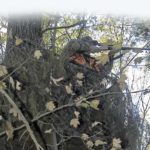

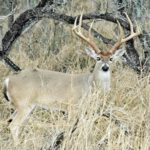
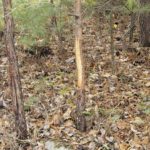
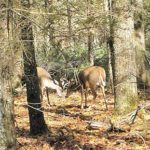



Be the first to comment